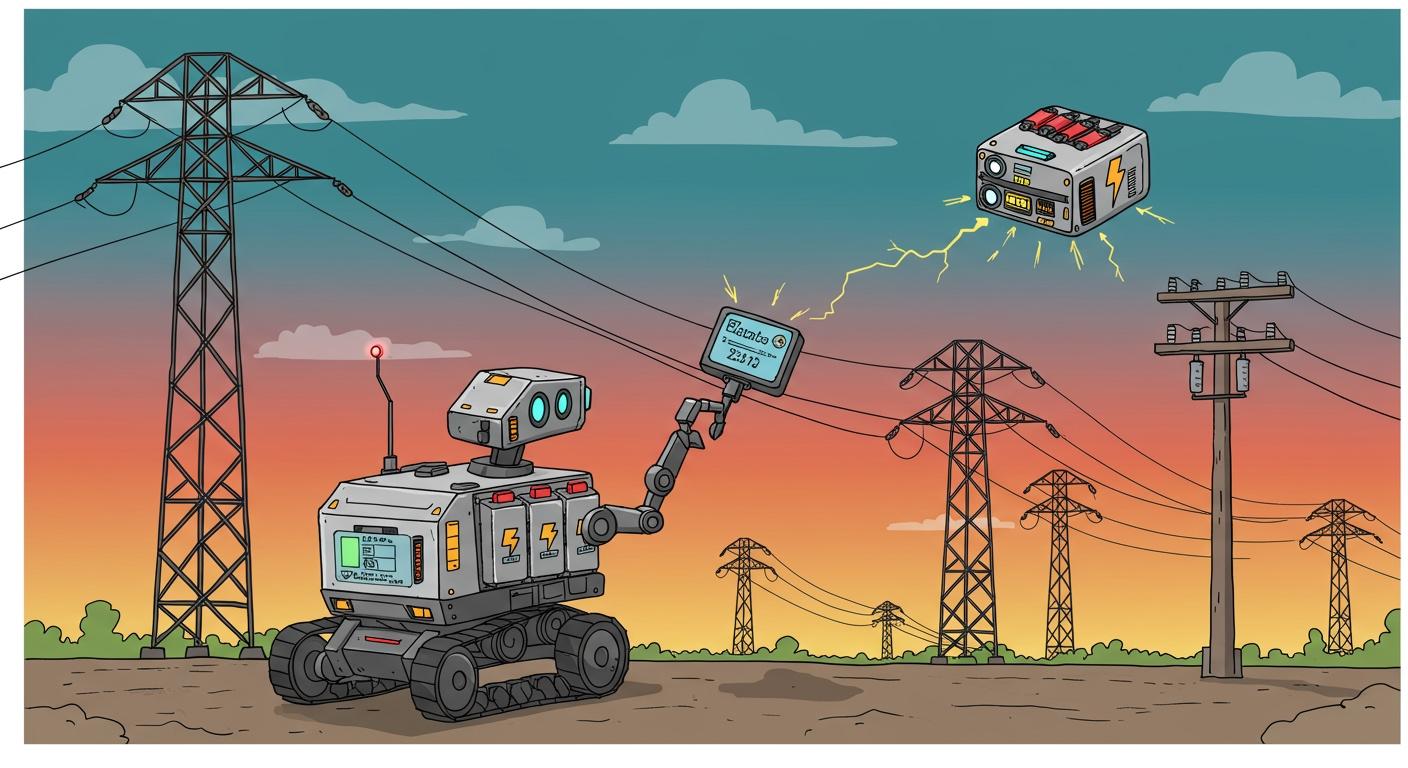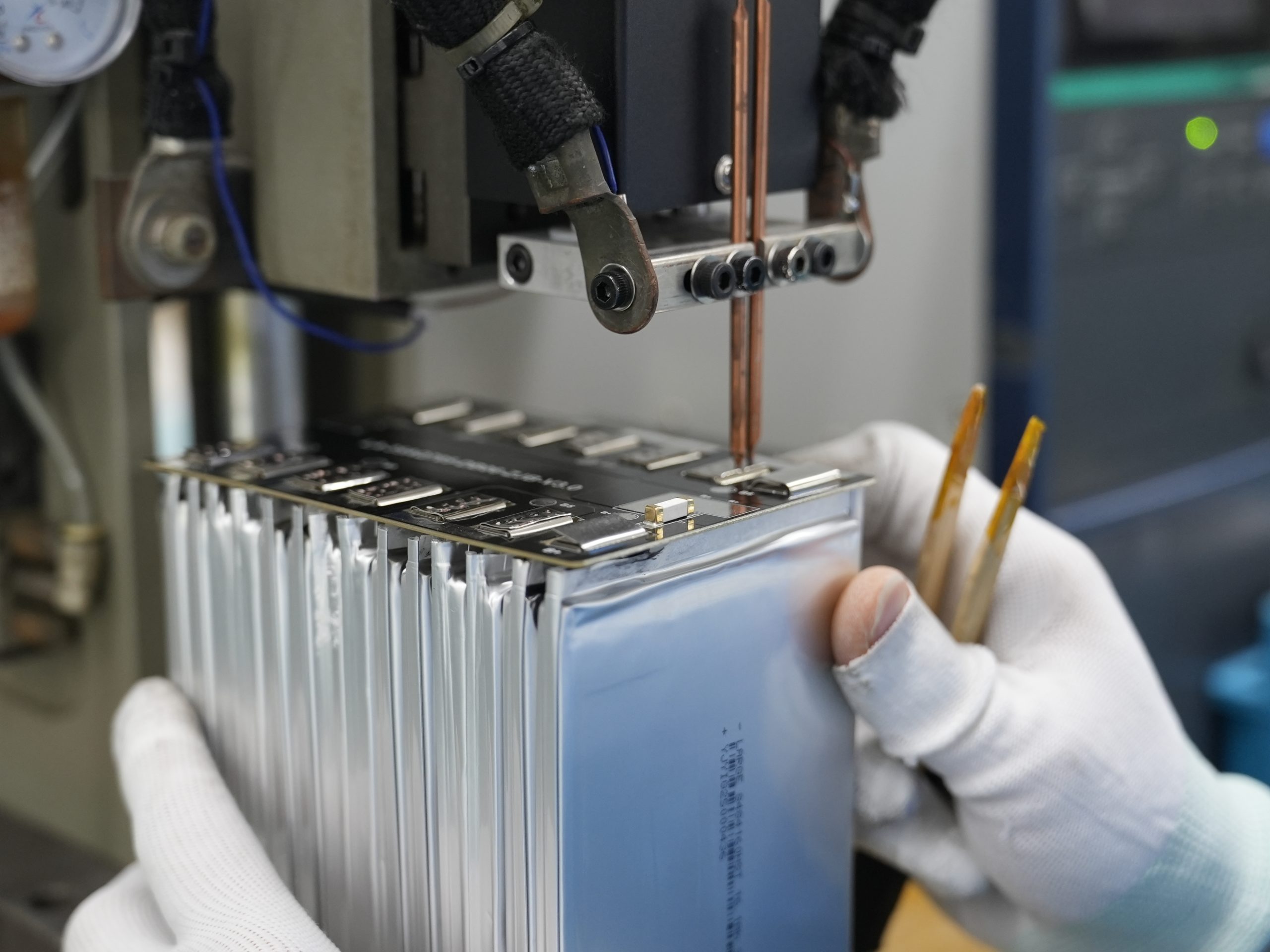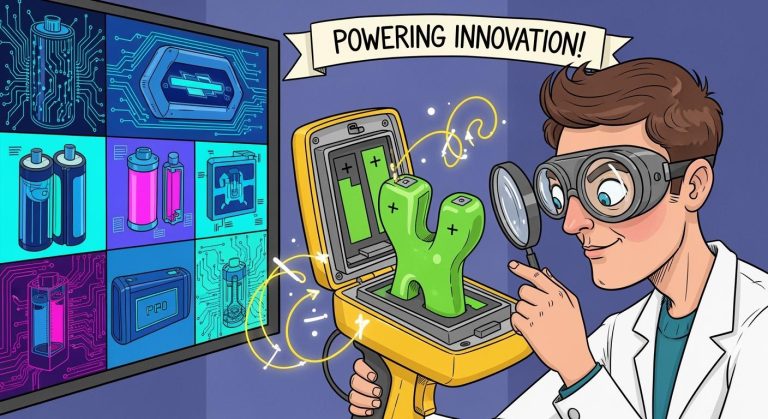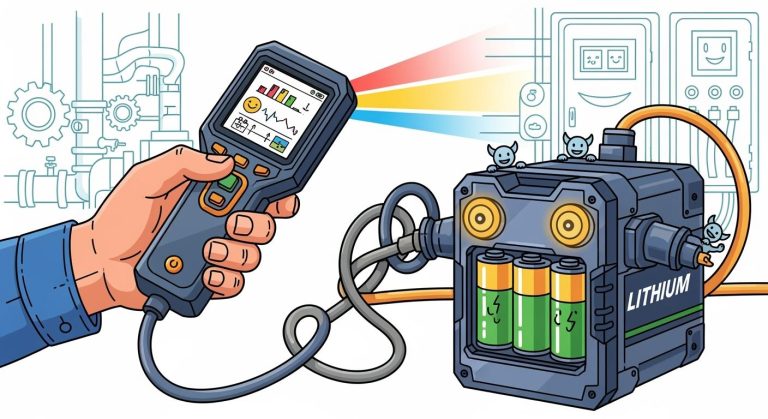
You see lithium battery solutions changing how inspection robots work in the power grid. Inspection robots need lightweight lithium batteries to move quickly and cover long distances. These batteries deliver the energy needed for reliable, autonomous operation. Lithium battery technology gives you more power with less weight, which helps in many sectors, including medical, robotics, and infrastructure. You can also use AI and advanced battery management to track energy use and extend battery life. With these solutions, you meet the growing demand for safe, efficient, and sustainable energy.
Key Takeaways
Lithium batteries provide high energy density, allowing inspection robots to operate longer without frequent recharging.
Custom battery packs can be designed to meet specific energy needs, enhancing the performance of robots in various environments.
AI-powered battery management systems improve battery life and safety by providing real-time diagnostics and predictive maintenance alerts.
Selecting the right battery chemistry, like lithium iron phosphate (LFP), ensures safety and longevity for inspection robots.
Sustainability trends in battery technology focus on recycling and eco-friendly practices, supporting a cleaner energy future.
Part 1: Lithium Battery Solutions
1.1 Inspection Robots and Energy Needs
Inspection robots need batteries that deliver consistent energy for long periods. You rely on lithium batteries because they store more energy in a smaller package. This high energy density lets mobile robots inspect large sections of the grid without frequent recharging. You see lithium battery packs in medical, security system, and industrial robots, where reliability matters most.
Lithium batteries give you the flexibility to design custom packs for inspection robots. You can fit batteries into unique shapes and sizes, which helps you build robots for tight spaces or complex grid structures.
Custom lithium battery packs meet high peak current demands. Your robots can climb towers, cross rough terrain, and handle heavy sensors without losing power.
Advanced safety features in lithium batteries protect robots working near people or sensitive equipment.
You meet regulatory standards more easily with custom lithium battery solutions, which helps you deploy robots in different sectors.
You notice that lithium batteries charge faster than older battery types. Some batteries reach full charge in minutes, so your robots spend less time waiting and more time working. The lightweight design of lithium batteries reduces strain on motors, which extends the lifespan of inspection robots. You get better coverage and improved operational efficiency.
1.2 Impact of Lithium Batteries
Lithium batteries change how you use inspection robots in the grid. You see longer operational times because solid-state batteries store two to three times more energy than conventional lithium-ion batteries. Energy density values reach about 300 Wh/kg, compared to 200 Wh/kg for older lithium-ion battery models. Your robots work longer and cover more ground.
A 40% weight reduction in lithium batteries makes mobile robots faster and more agile. You use less energy for movement, which increases reliability.
High-voltage batteries deliver stable power, even in harsh grid environments. You avoid interruptions and keep inspection robots running smoothly.
Lithium batteries support advanced battery management systems. You track energy use, predict maintenance needs, and optimize battery performance with AI tools.
You see lithium batteries in consumer electronics, infrastructure, and robotics sectors. These batteries help you meet the growing demand for efficient, autonomous inspection robots. You benefit from high-voltage batteries that deliver consistent energy, even in challenging conditions.
Lithium battery solutions give you the power to improve grid safety, reduce downtime, and extend the life of your inspection robots.
You choose lithium batteries for their reliability, fast charging, and high energy density. Your inspection robots operate efficiently, helping you maintain grid stability and safety.
Part 2: Battery Challenges
2.1 Longevity and Maintenance
You face several challenges when using lithium batteries in inspection robots. The lifespan of each battery often limits how long your robots can operate before needing replacement. Frequent charging cycles degrade battery performance, which means you must plan for regular maintenance. Temperature fluctuations in the grid environment also impact battery lifespan. Operational stress, such as heavy sensor use or rough terrain, adds to wear and tear.
Common maintenance issues include:
Short circuit risks, which can lead to thermal runaway, fires, or explosions.
Overvoltage, which damages batteries and creates safety hazards.
Overheating, often caused by excessive charging or discharging, risking battery damage.
You must monitor these factors closely with a battery management system to ensure safe and reliable operation. High-voltage batteries require extra attention because they can be more sensitive to overcharging and overheating. Advanced battery technologies help reduce some risks, but you still need regular inspections and timely replacements.
Tip: Schedule routine battery checks to catch early signs of degradation and prevent unexpected downtime.
2.2 Environmental Demands
Inspection robots often work in harsh grid environments. Extreme temperatures challenge lithium battery performance. Cold weather slows chemical reactions, reducing energy capacity and efficiency. High temperatures accelerate battery degradation and shorten lifespan. Cold conditions can cause lithium plating, which damages the battery. High heat increases the risk of thermal runaway, posing safety hazards.
You must select batteries designed for these conditions. The form factor and casing materials of lithium-ion battery cells affect performance. Cylindrical cells dissipate heat better, making them suitable for extreme heat. Battery enclosures must prevent water intrusion, especially in high humidity. The installation location also matters. You need to consider humidity and exposure to severe weather when deploying mobile robots.
Battery Chemistry | Energy Density (Wh/kg) | Temperature Tolerance | Typical Application |
|---|---|---|---|
Lithium-ion (NMC) | 200-250 | -20°C to 60°C | Robotics, Medical |
Lithium-ion (LFP) | 160-200 | -30°C to 55°C | Industrial, Infrastructure |
Solid-state Lithium | 300+ | -10°C to 70°C | Consumer Electronics |
If you want to learn more about conflict minerals in lithium battery production, visit this statement.
2.3 Integration Issues
You encounter integration challenges when deploying lithium battery-powered inspection robots in the grid. High initial costs can deter smaller utilities from adopting these solutions. Integrating robots with existing infrastructure and legacy systems presents technical hurdles. You may need to adjust operational workflows to accommodate new technology. Data security, privacy, and regulatory compliance add complexity to the process.
Compatibility issues between lithium batteries and existing grid infrastructure can hinder robot deployment. You need standardized communication protocols and interoperability to ensure effective integration. These challenges affect performance and regulatory compliance, which are crucial for successful deployment of robots that rely on energy storage systems.
Note: Collaborate with technology providers to develop solutions that fit your grid’s unique requirements and support seamless integration.
Part 3: Innovations in Lithium Batteries

3.1 Advanced Materials
You see rapid progress in lithium battery materials shaping the future of inspection robots. Manufacturers use new lithium-ion battery chemistries and solid-state designs to boost energy density and safety. Solid-state batteries eliminate flammable liquid electrolytes, which lowers safety risks compared to traditional lithium-ion battery packs. These batteries offer higher energy density, so your robots can operate longer between charges. You benefit from faster charging speeds and improved safety features, such as non-flammable solid electrolytes that reduce the risk of fire or explosion.
Solid-state batteries combine lithium metal anodes with solid electrolytes, increasing energy storage capacity.
These designs promise enhanced safety, reducing the risk of heat-related degradation and thermal runaway during rapid charging.
You gain longer operational times and better reliability for battery-powered robotics in harsh grid environments.
You can compare battery chemistries using the table below:
Chemistry | Energy Density (Wh/kg) | Safety Features | Application Sectors |
|---|---|---|---|
Lithium-ion (NMC) | 200-250 | Standard BMS, moderate safety | Medical, Robotics, Security System |
Lithium-ion (LFP) | 160-200 | High thermal stability | Infrastructure, Industrial |
Solid-state Lithium | 300+ | Non-flammable, enhanced safety | Consumer Electronics, Robotics |
You notice that solid-state lithium batteries may still have safety concerns, but they offer a promising future for inspection robots. You see these advanced battery technologies supporting mobile robots in medical, infrastructure, and industrial sectors. You get more reliable energy storage solutions for your grid inspection needs.
Tip: Choose battery chemistries that match your operational environment and safety requirements for inspection robots.
3.2 AI Battery Management
You rely on AI-powered battery management systems to optimize battery performance in inspection robots. Intelligent battery management systems use AI to estimate state of charge (SOC) and state of health (SOH) with high accuracy. AI models adapt to usage patterns and environmental conditions, giving you real-time diagnostics and predictive alerts. You detect anomalies early and prevent battery failures before they disrupt grid operations.
AI integration leads to better SOC and SOH estimations than traditional methods.
You receive real-time diagnostics and anomaly detection, which improves battery life and safety.
AI models enhance the accuracy of battery-powered energy enhancement, adapting to changing conditions.
You can see the performance of AI-based battery management systems in the table below:
Methodology | Performance Metrics | Mean Absolute Error | Median Absolute Error | RMSE | |
|---|---|---|---|---|---|
Random Forest | High | 0.999 | 0.0035 | 0.0013 | 0.0097 |
You use these systems to monitor lithium batteries in robots across medical, security system, and industrial sectors. You improve operational efficiency and extend battery life. You can learn more about battery management systems at this resource.
Note: AI-powered battery management systems help you predict maintenance needs and optimize battery-powered energy enhancement for inspection robots.
3.3 High-Voltage Solutions
You see high-voltage batteries transforming the future of inspection robots. These batteries deliver stable power and support fast charging, which increases operational efficiency. You use lithium iron phosphate (LFP) chemistry to reduce risks like overheating and short circuits. Manufacturers test batteries for impact resistance, ensuring durability in robotic applications.
Lithium iron phosphate technology enhances safety for battery-powered energy enhancement.
Semi-solid battery technology improves performance and supports wireless and fast charging (up to 1C-2C rates).
Intelligent battery management system integration establishes communication protocols and protection plans to avoid thermal runaway and overcharge.
You find battery solutions ranging from compact 38.4V 6Ah packs for rail inspection robots to high-capacity 51.2V 80Ah packs for heavy-duty transport robots. These solutions ensure reliable power and long cycle life. You benefit from low-cost, rechargeable lithium batteries that require less maintenance and support sustainable energy goals.
Feature | Description |
|---|---|
Battery Management Systems | Ensures cell balancing and prevents overcharge/discharge. |
Solid-State Batteries | Offers higher energy density and enhanced safety, promising for compact robotic platforms. |
Intelligent BMS Integration | Establishes communication protocols and protection plans to avoid thermal runaway and overcharge. |
Advantage | Description |
|---|---|
Low Cost | Rechargeable lithium batteries are cost-effective. |
Environmental Sustainability | They are more eco-friendly compared to other options. |
Ease of Maintenance | Lithium batteries require less maintenance, enhancing operational efficiency. |
You see high-voltage batteries supporting battery-powered energy enhancement in mobile robots across medical, infrastructure, and industrial sectors. You achieve better grid stability and reliability with advanced lithium battery solutions.
Callout: High-voltage lithium batteries drive the future of inspection robots, delivering reliable power and supporting sustainable energy storage solutions.
Part 4: Future Battery Solutions
4.1 Smart Grid Integration
You will see lithium battery solutions become even more connected to the grid in the future. Smart grid integration allows you to monitor and control inspection robots in real time. With advanced battery management, you can track battery-powered energy enhancement and adjust robot routes based on battery status. This technology helps you use high-voltage batteries more efficiently and keep your robots working longer. In the medical, robotics, and infrastructure sectors, smart grid connectivity supports remote diagnostics and energy optimization. You gain better control over energy use, which leads to improved grid stability and more reliable power for your operations.
4.2 Predictive Maintenance
Predictive maintenance will shape the future of lithium battery-powered robots. You can use real-time telemetry and predictive analytics to monitor battery health and schedule maintenance before failures occur. This approach increases uptime and reduces costs. The table below shows how predictive maintenance improves inspection robot performance:
Key Aspect | Description |
|---|---|
Real-time Telemetry | Enables on-the-fly decisions such as rerouting robots and scheduling maintenance based on battery status. |
Predictive Analytics | Identifies failing cells before they cause downtime, allowing for targeted maintenance actions. |
Integration with Fleet Systems | Enhances overall fleet reliability by optimizing energy usage and maintenance scheduling. |
You can use predictive analytics tools to track state of charge, state of health, voltage, current, and temperature. These tools estimate remaining useful life and recommend optimal charging rates. Machine learning models analyze usage patterns and help you get the most from your lithium batteries. Charging stations monitor robot health and enable proactive maintenance, which keeps your mobile robots ready for action.
A battery management system allows you to receive alerts before failures, improving robot uptime and supporting battery-powered energy enhancement.
4.3 Sustainability Trends
Sustainability will drive the future of lithium battery technology. You will see a focus on energy-efficient drives, waste minimization, and green manufacturing. Manufacturers use environmentally friendly solvents and binders, and they adopt circular economy practices for recycling and material recovery. Eco-friendly materials and cleanroom-compatible designs help reduce the carbon footprint of batteries.
Reusing automotive lithium-ion batteries in second-life applications can delay the recovery of valuable metals and reduce the carbon footprint by up to 28.5% as the grid transitions to renewable energy sources.
Extending battery life reduces demand for raw materials and supports sustainable energy.
Second-life batteries help stabilize the grid and promote renewable energy.
Recycling and material recovery improve resource efficiency and support the energy transition.
You can learn more about sustainable battery solutions at Our Approach to Sustainability. In the future, you will see more lithium battery-powered robots in medical, security system, and industrial sectors, all supporting a cleaner and more efficient grid.
Part 5: Implementation for Grid Operators

5.1 Selecting Batteries
When you select a battery for inspection robots, you need to match the battery’s voltage and capacity to your robot’s needs. You must check that the battery fits the available space and keeps the robot lightweight for better mobility. Always verify that the battery can handle the robot’s peak energy demands. Choose batteries with a long cycle life to reduce maintenance. Look for chemistries like lithium iron phosphate (LFP) if your robots need frequent charging. Make sure the battery works well in your operating environment and has the right IP rating for harsh conditions. Safety features such as protection circuits and thermal management are essential. Check that the battery supports your robot’s communication protocol, such as CAN or RS485.
Battery voltage and capacity
Battery size and weight
Discharge current
Battery lifespan
Environmental compatibility
Safety features
Communication protocol
You can compare battery types and their impact on operational efficiency in the table below:
Battery Type | Key Characteristics | Impact on Operational Efficiency |
|---|---|---|
NMC | High energy density, long cycle life | Suitable for extended operational times and high power output, crucial for productivity in logistics and warehousing. |
LTO | Exceptional charge/discharge rates, longer life cycle | Ideal for rapid charging needs in manufacturing, ensuring continuous task performance and high safety. |
5.2 Safety Protocols
You must follow strict safety protocols when handling lithium batteries in inspection robots. Use overcharge, over-discharge, and short-circuit protection mechanisms. Install thermal management systems to keep battery packs at safe temperatures. Real-time fault detection helps you spot issues before they cause failures. Cell balancing prevents overcharging and overheating, which keeps your robots safe.
Overcharge, over-discharge, and short-circuit protection
Thermal management systems
Real-time fault detection
Cell balancing
To mitigate risks associated with lithium-ion batteries, you can implement advanced monitoring systems, thermal management solutions, and fire suppression techniques. These strategies are essential for safeguarding against catastrophic failures in battery systems.
5.3 Cost Optimization
You can optimize costs by choosing batteries with a long lifespan and low maintenance needs. Select energy storage solutions that match your robots’ energy requirements to avoid overspending. Use battery management systems to extend battery life and reduce replacement costs. Consider the total cost of ownership, including initial purchase, maintenance, and energy efficiency.
Cost Factor | Optimization Strategy |
|---|---|
Battery lifespan | Choose long-life chemistries (e.g., LFP, LTO) |
Maintenance | Use advanced battery management systems |
Energy efficiency | Match battery capacity to robot energy storage needs |
Replacement cycle | Select batteries with high cycle life |
You will see the best results when you balance performance, safety, and cost for your mobile robots in the grid, medical, security system, and industrial sectors.
You see lithium battery innovations shaping the future of inspection robots across the power grid. These advances improve reliability, efficiency, and sustainability in every sector, from medical to industrial. You rely on AI and advanced battery management to prepare for the future and keep your robots ready for new challenges. To secure your future success, you should evaluate battery options, train your teams, and adopt predictive maintenance. You lead your organization into the future by choosing future-ready solutions that support safe, efficient, and sustainable grid operations.
FAQ
What lithium battery chemistries work best for inspection robots?
You get the best results with lithium iron phosphate (LFP) and nickel manganese cobalt (NMC) chemistries. LFP offers high safety and long cycle life. NMC provides higher energy density for longer operation. Both work well in medical, robotics, and industrial sectors.
How do you extend the lifespan of lithium battery packs?
You should use advanced battery management systems. Schedule regular maintenance checks. Avoid deep discharges and extreme temperatures. These steps help you maximize battery life in inspection robots across infrastructure and security system applications.
What safety features should you look for in lithium battery packs?
You need overcharge, over-discharge, and short-circuit protection. Thermal management systems keep batteries cool. Real-time fault detection helps you prevent failures. These features support safe operation in consumer electronics, medical, and industrial robots.
Can lithium battery-powered robots operate in harsh environments?
You can deploy robots with lithium battery packs designed for wide temperature ranges and robust casings. Choose batteries with high IP ratings for water and dust resistance.
How does AI improve lithium battery performance in inspection robots?
AI-powered battery management systems give you real-time diagnostics and predictive alerts. You track state of charge and health. This technology helps you optimize energy use and prevent failures in robotics, medical, and security system applications.






